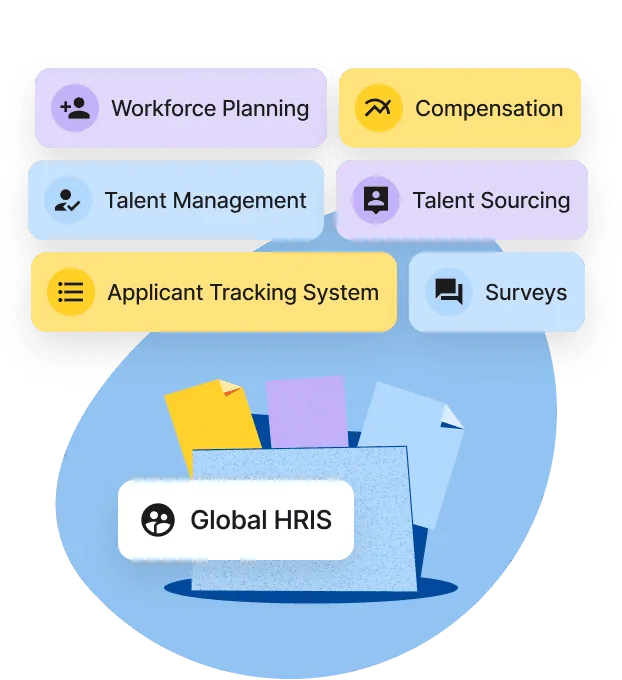Make Your Software Search More Seamless With a Software Advisor
Author
Alice Burks
Last Update
June 09, 2025
Published
June 23, 2023

Table of Contents
Table of Contents
About the author
Alice Burks is the Director of People Success at Deel. She has a passion for transforming the workplace, and is dedicated to creating a new world of work where individuals have access to the best global opportunities and organizations can connect with top-tier talent.
At ToolAdvisor, we’ve seen hundreds of small teams run into the same issue: choosing the right software takes longer, feels harder, and ends up being riskier than it should. Most of the time, it’s not about a lack of good tools — it’s about how teams approach the search. Without structure, the process feels scattered. With the right approach, it becomes faster, clearer, and more aligned to your goals.
Here’s how to make your software search less overwhelming — and more successful.
Why software buying is harder than it should be
For small teams, choosing software should feel like a power move—one that saves time, unlocks scale, and makes the team sharper. But more often than not, it’s the opposite.
With too many options, conflicting reviews, vague pricing, and endless product claims, software selection can become a full-time job. According to ToolAdvisor’s 2024 Software Buyer Behavior Survey, 82% of teams take over a month to select a tool, and 1 in 3 regret their final decision within the first year.
The problem? Most teams start their search without a clear strategy or support system.
Who software advisors are and how they help
At ToolAdvisor, we offer something most teams don’t even realize they need: a human advisor to guide their software search.
Our advisors are industry-aligned software specialists—experts who’ve worked with thousands of buyers across verticals like HR, Marketing, Ops, Finance, Legal, and more. Their job isn’t to sell you on a product. Their job is to help you define what you actually need and then match you to a curated shortlist of vendors that solve for those exact pain points.
They’ve helped over 30,000 people find the right software. And they do it without bias—advisors aren’t paid by vendors and don’t take commissions.
What makes a good software shortlist
A good shortlist isn’t a random list of names. It’s a filtered, prioritized set of vendors that:

Offer the features you actually need

Align with your team size and budget

Integrate well with your current stack

Have great support and onboarding

Are tailored for your industry or use case
That’s what ToolAdvisor advisors deliver. Within one call, you’ll get a personalized shortlist of up to 5 vendors based on real data, reviews, integrations, and pricing match. And you’ll often skip weeks of back-and-forth research.
According to our 2024 survey, 34% of SMB buyers listed ease of use as their top priority in a new tool—advisors use this kind of data to filter for what matters to you most.
A key takeaway for you: Even without a platform like Deel, any company can create this kind of clarity. Start with a shared RACI or even a basic checklist. What matters most is that ownership is visible, and people know their role in delivering a great experience.
Common traps buyers fall into

Feature fatigue: You start looking for one thing and end up in a rabbit hole of product pages and YouTube demos—confusing must-have vs nice-to-have.

Biased reviews: You rely on a few glowing reviews, not realizing most review platforms are pay-to-play or gamed by vendor incentives.

Going with the first demo: You're overwhelmed, the sales rep was nice, the price seemed right—so you sign too fast, only to realize later it doesn’t solve your core need.

Overbuying: Many buyers end up with tools built for enterprises, not small teams. You pay for features you’ll never use, and onboarding takes months.

Underestimating integration needs: You fall for the flashiest UI, but it doesn’t sync with your CRM, HRIS, or email stack—and now you’re stuck.
Advisors help you avoid all of this.
A key takeaway for you: None of these actions require a big budget—but they do require intention. A short Loom, a Slack message, or a team coffee can leave a lasting impression.
Real examples of better outcomes with advisors
→ Finance Lead at a 10-person startup:
Needed a tool for vendor payments but was overwhelmed by feature sets in ERP platforms. The advisor helped clarify that a lightweight AP automation tool like Tipalti would solve 90% of the need. Saved $20k/year in licensing.
→ People Ops Manager choosing an ATS:
Was leaning toward a well-known enterprise solution but realized through an advisor that a smaller vendor—Teamtailor—offered better UX, faster setup, and tighter budget alignment.
→ CEO choosing all-in-one project management:
Wanted to consolidate docs, tasks, and meetings. Advisor helped them compare Notion, ClickUp, and Basecamp side-by-side and set up demos based on their team’s async-first culture.
The result: Better fits, less regret, smoother implementation.
A key takeaway for you: Even in a scrappy setup, this kind of behind-the-scenes clarity is possible:
Use one doc or tool to track onboarding ownership by function
Share a timeline with key tasks and touchpoints
Flag blockers clearly (e.g., device not provisioned, contract not signed).
Tips for making your search more efficient
Start with your biggest problem, not a list of tools.
Software solves problems, not categories. Are you trying to reduce churn? Speed up hiring? Improve vendor compliance? Advisors help clarify this.
Use the call to define your real must-haves.
You may think you need AI, dashboards, or integrations. But once we understand your workflows, we might guide you to tools that solve the same need more elegantly.
Ask about pricing traps.
Advisors know which tools offer transparent pricing, which ones require a sales call to unlock details, and which ones surprise you with implementation fees later.
Leverage warm intros to vendors.
Once your advisor has your context, we can hand off directly to the vendor with all your key requirements. No repeat conversations. No cold calls.
Demo smarter.
We recommend going into vendor demos with 5–7 use-case questions like:
How would this handle [X] in our workflow?
What setup time do most 10-person teams need?
What support comes after onboarding?
Key takeaway for you: Automate the admin so your team can show up live for the moments that matter. No tool can replace human warmth, even over Zoom.
Key takeaways
If you’re just starting out, start small:
Use one doc to define onboarding roles by team
Give managers a simple first-week checklist
Redesign orientation to create conversation, not just compliance.
When you do these things, you’ll find that onboarding isn’t just about getting people up to speed. It’s about setting the tone for how your company works together—and who it’s for. Because onboarding done right isn’t just a process. It’s a first impression of your culture in action.
- Software advisors save you time, reduce regret, and simplify complex decisions.
- A good shortlist should align with your budget, stack, and specific use case—not just vendor popularity.
- You’ll get more value from a 15-minute advisor call than 5 hours of solo research.
- Advisors act as neutral partners—no sales, no pressure.
- With the right prep and advisor guidance, your demo process becomes a high-signal decision checkpoint instead of a guessing game.
Match with your advisor at ToolAdvisor
Software buying shouldn’t be a headache. Our team is here to make your search fast, clear, and built for your business—no matter your size or industry.Talk to an advisor for free and get your personalized shortlist today.
Schedule your call now.
Deel HR
All-in-one HR management solution for global teams
Deel HR brings everything together—planning, hiring, performance, compensation, and more—so you can manage your global workforce in one intuitive system. Onboard in minutes, automate tasks, and stay compliant in 150+ countries.

More resources
1. How Long Should Onboarding Take? Best Practices and Ideal Timeline
2. How to Make Onboarding More Engaging: 17 Fun Onboarding Ideas
3. How to Use AI in Employee Onboarding: 7 Key Use Cases to Drive Success
4. 11 Companies with the Best Onboarding Programs: Find Inspiration for Your Strategy
5. How Google Onboards New Hires (And How You Can Easily Replicate It)
About the author
Collin Couey is a software buying advisor and technology researcher at ToolAdvisor. Based in Austin, Texas, he’s helped thousands of small businesses find smarter, faster ways to choose software without wasting time or money.









